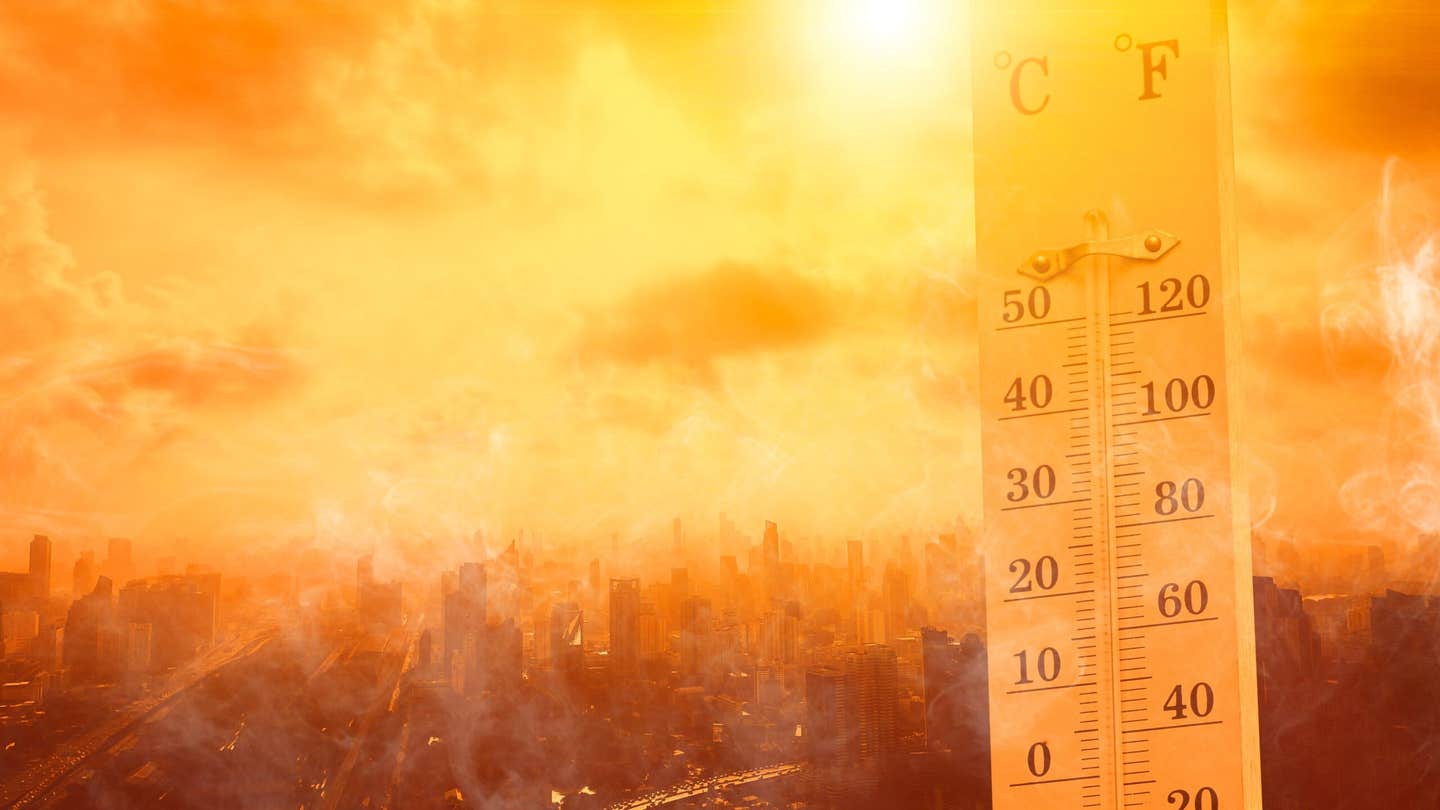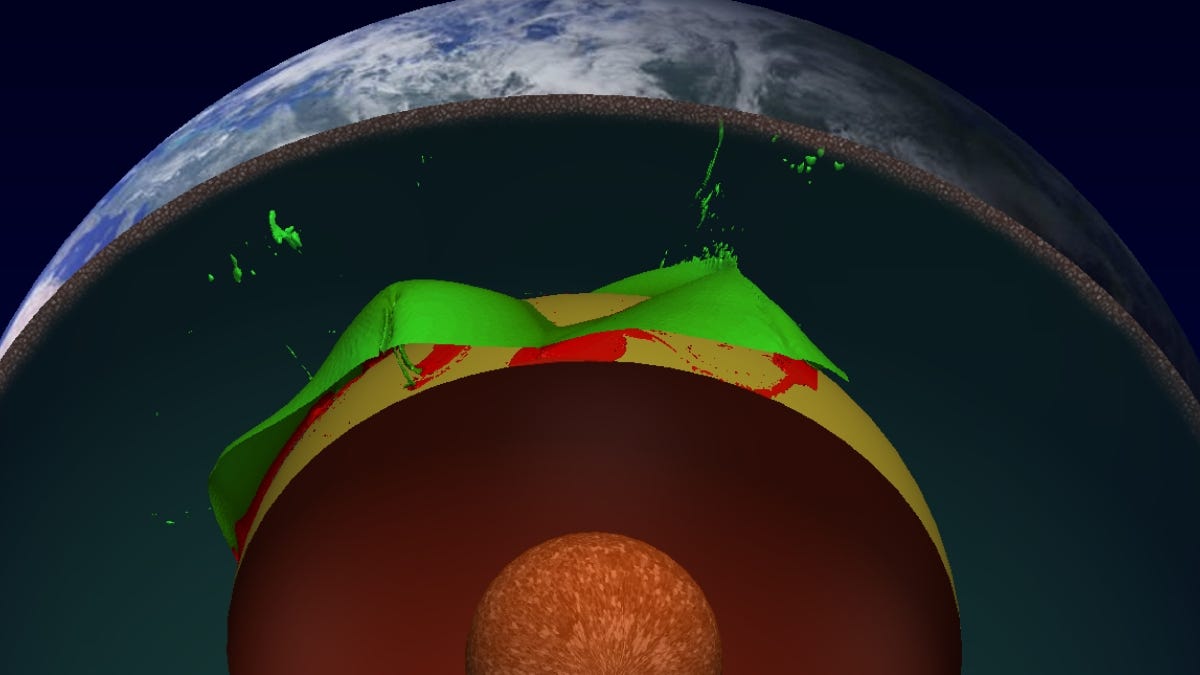Europe’s next heat wave could kill as many people as the worst week of COVID
Study finds repeat European heat waves in a hotter world could cause weekly deaths rivaling the worst weeks of COVID.

 Edited By: Joseph Shavit
Edited By: Joseph Shavit

A new Nature Climate Change study shows that if Europe’s past heat wave patterns recur in today’s warmer climate, weekly deaths could double and, under higher warming, even rival the worst weeks of the COVID pandemic, exposing sharp limits to current adaptation. (CREDIT: Shutterstock)
Some of the same weather patterns that brought Europe its worst heat waves in recent decades are still out there, circling the globe. The difference now is the background climate. The planet is hotter than it was when those events first struck, and that extra heat could turn a bad week into something closer to a mass casualty disaster.
A new study in Nature Climate Change warns that if those familiar “heat dome” patterns return in today’s climate, weekly deaths in Europe could approach the levels seen in the worst weeks of COVID. It is a stark message if you live in a city that already struggled through 2003, 2019 or 2023.
“We showed that if these same weather systems were to occur after we’ve trapped a lot more heat in the atmosphere with greenhouse gases, the intensity of the heat waves gets stronger and the death toll rises,” said lead author Christopher Callahan, who did the work at the Stanford Doerr School of Sustainability and now teaches at Indiana University.
Global temperatures in recent years have hovered close to 1.5 degrees Celsius above pre industrial levels. That is about 0.7 degrees hotter than in 2003, when a ferocious heat wave killed more than 20,000 people across Europe.
Replaying Europe’s Worst Heat Waves
The research team focused on five major heat waves between 1994 and 2023, including the infamous 2003 event. Each of those episodes followed a similar “recipe for disaster”. A high pressure system stalled over land, rainfall stayed low for months, soils dried out, and the air above heated day after day.
In 2003, that pattern locked temperatures near 38 degrees Celsius, or 100 degrees Fahrenheit, for two weeks over much of Western Europe. In France, morgues filled so quickly that refrigerated trucks had to store bodies. The heat was so extreme that early analyses treated it as almost a one in a million year event without climate change.
“That event, which was devastating from a health point of view, was extremely statistically rare at the time that it happened, and yet we know it’s possible the weather conditions that produced it could happen again, but in what is now a much warmer climate,” said co author Noah Diffenbaugh of Stanford.
The new study asks a simple but unsettling question that matters directly to you if you live in Europe. What happens to the death toll if that same pattern hits again in today’s climate, or in a future that is even warmer?
How the Study Tested Future Risk
To answer that, the scientists combined artificial intelligence with tools from economics. They first trained machine learning models on large climate simulations to learn how certain pressure patterns, soil moisture levels and other weather features translate into surface temperatures, given a specific global average temperature.
Then they fed those models real historical weather maps from the five big events and asked a “what if” question. What if this exact pattern occurred in a world 1.5, 2 or 3 degrees Celsius above pre industrial levels? The result was a set of “replayed” heat waves, each one hotter because of the warmer background climate.
Next, they matched those temperatures with detailed death data from 924 regions across Europe. Using statistical methods, they measured how weekly mortality changes as temperature rises above the level that brings the fewest deaths in each place. As co author Marshall Burke explained, “We don’t compare Paris to Amsterdam, but instead compare Paris to itself during the really bad August heat wave of 2003 and the normal August of 2002.”
That approach let them isolate the specific impact of heat in each region. It also reflected what you might feel in your own town. What counts as “extreme” is not the same in Stockholm as in Seville, but the health risks climb sharply once local thresholds are crossed.
The Steep Cost of Extra Degrees
The numbers that come out of this work are hard to ignore. In a world with no global warming, the 2003 style pattern would cause around 9,000 excess deaths in Europe in its peak week. In today’s climate, close to 1.5 degrees above pre industrial levels, that same pattern would kill an estimated 17,800 people in a single week.
If global temperatures reach 3 degrees above the pre industrial baseline, a repeat of the 2003 pattern would drive weekly excess deaths to about 32,000. At 4 degrees, the toll could reach roughly 45,000 deaths in one week. Similar patterns from 1994, which looked less extreme at the time, would also become far more lethal in a hotter world.
“These events could be as bad as some of the worst weeks of COVID by mid-century” said Burke, who studies environmental risks and society. At the height of the pandemic, Europe saw roughly 28,000 to 34,000 recorded deaths in its deadliest weeks. Under strong warming, a single heat wave could match or exceed those numbers.
The study also shows that climate change already plays a major role. At 3 degrees of warming, roughly 70 percent of the projected deaths in a replayed 2003 event would be due to human driven warming, not natural variability.
Limits To Adaptation and Strain on Health Systems
You might hope that better adaptation will solve this problem. After all, Europe has invested in heat action plans, early warning systems and public messaging since 2003. The study finds that these efforts help, but only to a point.
By looking at how different regions currently respond to heat, the authors estimate that continued adaptation could cut the death toll from extreme events by only about one in ten. The rise in risk with temperature remains very steep. Even in the warmest areas, the data show deaths start to climb sharply after days around 30 degrees Celsius, or 86 degrees Fahrenheit, “potentially reflecting limits to adaptation to the hottest conditions,” the authors write.
The real world impact of such heat does not stop with direct heat stroke. Burke pointed out that “A lot of the reason for excess deaths is because we are just so underprepared for these events. Similar to during COVID when the health system was just fully disrupted, people can’t get to the hospital, hospitals have to discharge people early,” he said. “So, even if you have something bad happen to you that’s not related to heat at all, your care is going to suffer and health outcomes will worsen.”
For you, that might mean a longer wait in an emergency room, a cancelled procedure or delayed care for a chronic condition, all during a week when your body is already under stress from the heat.
Diffenbaugh said the results highlight the need to plan for extremes that match what the study describes, not just averages on a climate chart. “There are a lot of reasons to be skeptical about future climate projections, but we can at least be prepared in the event that the kinds of weather conditions we’ve already experienced occur again but in a warmer climate,” he said.
Practical Implications Of The Research
This work gives health officials, city leaders and you a clearer picture of what is at stake as the planet warms. It shows that the most dangerous weeks will not just be slightly worse versions of a typical hot spell. They could be crisis weeks when hospitals strain, power grids run near their limits, and thousands more people die than usual.
Because the study links specific weather patterns to concrete death counts, it offers a tool for emergency planners. Hospitals and ambulance services can use these scenarios to stress test their systems. Cities can map which neighborhoods, often poorer or older, would face the highest risk and target cooling centers, tree planting and outreach there.
The findings also underline the value of keeping global warming as low as possible. Every extra half degree turns a bad week into something far worse for real people, including you and your family. Even with strong adaptation, the only reliable way to avoid the most extreme death tolls is to limit how hot the background climate becomes.
Finally, the work encourages new research into which measures actually save lives: affordable home cooling, better building design, social programs that check on isolated residents, and stronger protections for outdoor workers. If societies learn faster and invest more, the death numbers in this study do not have to become reality.
Research findings are available online in the journal Nature Climate Change.
Related Stories
- New study reveals the links between climate, earthquakes and human evolution
- Artificial light pollution emerges as a major climate threat
- Ancient Antarctic ice reveals six million years of Earth’s climate history
Like these kind of feel good stories? Get The Brighter Side of News' newsletter.
Joshua Shavit
Science & Technology Writer and Editor
Joshua Shavit is a Los Angeles-based science and technology writer with a passion for exploring the breakthroughs shaping the future. As a co-founder of The Brighter Side of News, he focuses on positive and transformative advancements in AI, technology, physics, engineering, robotics and space science. Joshua is currently working towards a Bachelor of Science in Business and Industrial Engineering at the University of California, Berkeley. He combines his academic background with a talent for storytelling, making complex scientific discoveries engaging and accessible. His work highlights the innovators behind the ideas, bringing readers closer to the people driving progress.



